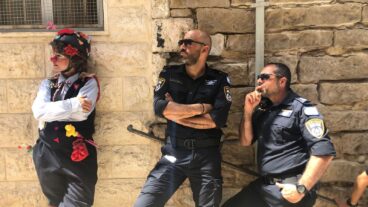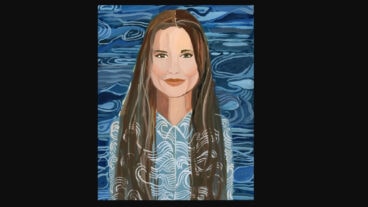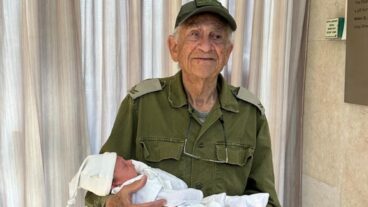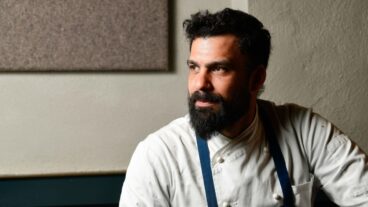Dr. Hagar Landsman at the South Pole – Thanks to the scientific challenges, I am overcoming the difficulties.Israeli physicist Dr. Hagar Landsman has gone from the cold winters of Wisconsin to the colder winters of Antarctica.
The graduate of the Technion Institute of Science now doing post-doctoral work in Wisconsin, is the only Israeli participating in Project ‘IceCube’ – an international group of scientists conducting research on sub-atomic particles called neutrinos. Landsman is completing a month at the southern tip of the Earth – for the second year in a row – helping to build a giant telescope for astrophysical research.
“During my studies in the Technion’s Faculty of Physics, I presented Project Ice Cube, which was being carried out at the South Pole, to the students. One of the slides showed physicists wrapped in red parkas installing detectors at the Pole. At that time, I never dreamt that only a few years later I would be one of these scientists,” relates Landsman.
IceCube is a neutrino telescope for astrophysics research. Neutrinos are basic, subatomic particles created by astrophysical processes. “They are unique in that there is a very low chance of their interacting with matter.
They are therefore capable of traveling vast distances without being swallowed up, and can bring us information about astrophysical phenomena,” explains Landsman.
“In order to increase the chance of measuring a neutrino, we need a very large detector. If we are in luck and the neutrino reacts with the matter, a charged particle is created that travels faster than the speed of light in matter and emits faint flashes of light. Measuring this faint light with light shielded detectors demonstrates the existence of the neutrino. Therefore, in order to build a neutrino detector, we need a lot of transparent, dark matter such as a deep ice cap. And there is nothing better for this than Antarctica.”
When the IceCube detector is completed in another few years, it will be made up of a system of 5,000 light detectors spread out over one cubic kilometer. Using a special drill, Landsman and her colleagues are drilling giant 2.5-kilometer holes in the ice and putting in them a chain of detectors.
Each hole contains 60 light sensitive detectors, each one of which is the size of a basketball and weighs 15 kilograms. In order to carry out correct data analysis, it is necessary to characterize the detectors and to be familiar with their behavior and the information they supply. Moreover – once the detectors are in the ice, they cannot be replaced or repaired and therefore the scientists must verify their quality before installation.
Landsman is responsible for checking the detectors before sending them to the Pole, and for rechecking them on the ice. In addition to checking, she also deals with analyzing the data gathered and checking the quality by comparing it to simulation and theoretical forecasts, as well as isolating background signals. In the last few months, she has also been dealing with developing the next generation of neutrino detectors, which are based on radio detectors.
“Conditions here are not easy,” she relates. “It is intensely cold and dry here and there is not enough oxygen. In this season of the year, there is daylight all the time. The rooms are small (1 by 3 meters) and you can only shower twice a week, for two minutes each time. Getting here is also difficult. In the good case, it takes four days, depending on weather conditions. Telephone connections and email with the world are limited to the time when the satellite is overhead. But thanks to the scientific challenges, I am overcoming the difficulties, just like the 200 other wonderful people manning this remote research station.”
With Landsman on the other side of the world, her husband Adi, also a Technion graduate, is taking care of their four-year-old daughter Tamar. According to Landsman, Tamar doesn’t understand why her mother is at the South Pole and therefore, she proudly explains that her mother is taking care of the penguins.
“For some reason, the penguins speak more to the child’s heart than neutrinos,” laughs Landsman.












